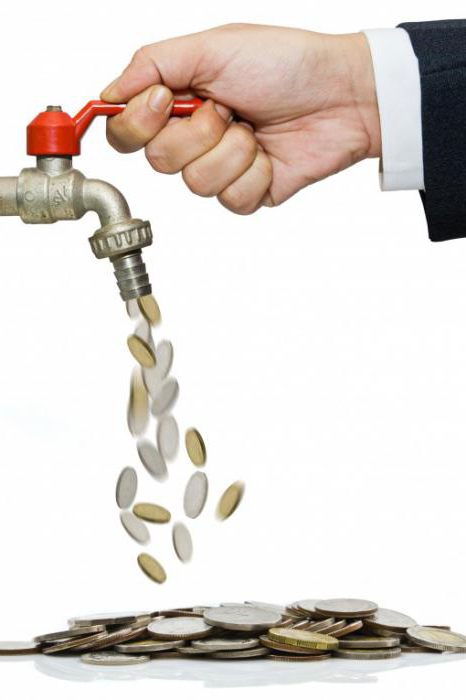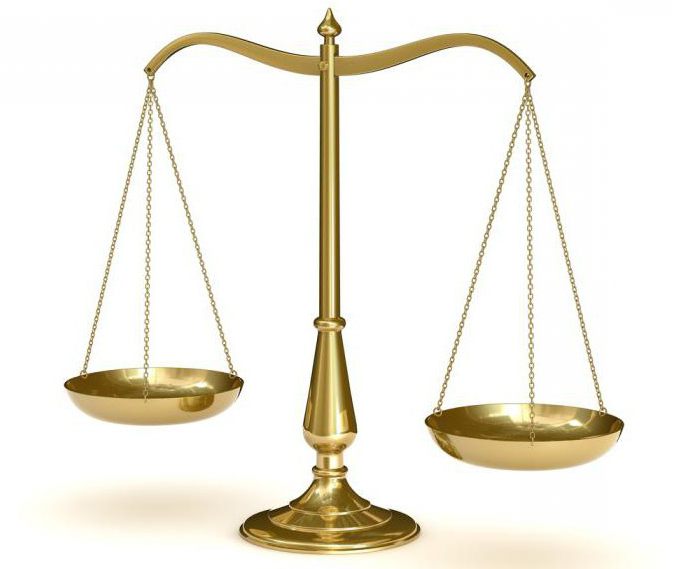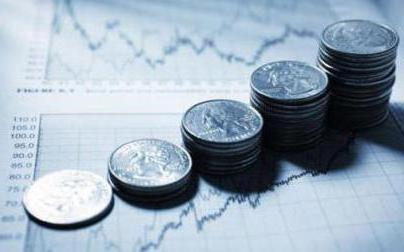Accounting has two key concepts on which the whole system is built: assets and liabilities. They are the main indicators of the property status of the company, so the financial well-being of the enterprise depends on how effectively such values are used. Choosing the most rational policy for managing current assets and liabilities, it is possible to increase the liquidity of working capital, which will attract new sources of financing.
How assets and liabilities are formed

In the process of economic activity of the company, personal property and obligations are formed. These concepts have a polar accounting structure, and are reflected in the balance sheet in different sections.
In fact, they are one and the same financial means, divided according to the principle of use. Current liabilities in the balance sheet are sources of assets, therefore, they should always be equal. Violation of the "currency" of the balance suggests that the acquired property is not secured by cash. The main working capital management strategy is aimed at maintaining the solvency of the company and maintaining a certain level of assets.
What are current assets

Funds that can turn into money during one production cycle are called current (current) assets. These include all material assets, stocks, components, receivables, finished products and, of course, cash. Current assets are in constant motion, ensuring the continuity of the production process.
Depending on how quickly property values turn into money, they are assigned a degree of liquidity. Revolving balance sheet items are placed as this indicator decreases from a larger to a lower value.
The nature of liabilities

The totality of all the obligations of a company that occupies the opposite side of the balance sheet is commonly called liabilities. Such funds include short-term loans, payables, registered capital, accumulated profit.
Depending on the nature of their occurrence, such funds can be divided into own and borrowed. In turn, own funds paired with long-term loans form permanent liabilities, and Short-term liabilities and payables - current short-term liabilities.
Placement of passive obligations under balance sheet items

Working capital financial management is a thorough analysis of the movement of current liabilities and assets. This policy is aimed at solving such problems as accelerating turnover with the aim of increasing liquidity, optimizing the formation of assets, and identifying shortages or surplus funds.
Due to the fact that current liabilities have different sources of origin, their distribution in the balance sheet is strictly structured. The third section of the balance sheet is fully devoted to all types of capital (authorized, reserve, incremental). Also in this section you can find retained earnings that remain at the disposal of the company after tax.
The balance sheet items of the fourth section consist of long-term credit and deferred liabilities. The fifth section of the balance sheet is devoted to accounts payable, which includes tax liabilities, accrued wages to employees, debts to suppliers and founders,as well as short-term loans.
The relationship of the active and passive parts of the balance
Due to the fact that assets and liabilities cannot exist without each other, they constantly interact. But, despite the fact that changes in one part of the balance entail an indispensable change in values in another part, the "currency" always remains the same. With an increase in liabilities, assets rise by the same amount. Therefore, if the company's management decides to increase assets, then you need to start with liabilities.
Conservative Working Capital Management
The capital management policy is based on maintaining a sufficient level of current assets by attracting financial sources. Depending on what goals are pursued in the conduct of a particular business, there are three main models for managing current assets and liabilities.
A conservative management method assumes a fairly low number of current assets. At the same time, the turnover period of funds is also reduced to a minimum. Such a policy is convenient for companies that clearly know the time frame of the production cycle. Products are manufactured for a specific consumer, so the volume of stocks is strictly limited. The manufacturer has no doubt in the timing of receipt of payments, in connection with which he does not need to purchase materials for future use.
In conditions of marginal savings, a sufficiently high liquidity ratio assets, and, as a result, increased profitability of production. But with this tactic of doing business, there is a great risk of unforeseen situations when payments are not received on time and the material base is at zero.
The main distinguishing feature of conservative management is that current liabilities in the form of short-term loans have a very low proportion in the mass of all liabilities. All activities of the enterprise are carried out at the expense of own working capital.
Aggressive model of increasing assets and liabilities

In the presence of a significant amount of cash, the company is constantly increasing the volume of stocks and finished products. In addition, in connection with the increase in current assets, a direct dependence is manifested in the form of an increase in liabilities. In turn, the production process itself is quite protracted, and the circulation of material assets is slow.
Choosing such a management policy, we can confidently say that the risk of a technical failure of the production process will be minimal in this case, as well as economic profitability.
Aggressive management model increases current liabilities due to short-term loans, which provide an adequate level of reserves and cash. In turn, a large number of accrued interest acts as a financial leverage, which increases costs and reduces profitability. The risk of loss of liquidity of assets is also great.
Moderate Working Capital Management Policy
If we analyze the moderate tactics of doing business, we can see that such a model takes an intermediate place among the above. Half of all assets under this policy is occupied by current assets, which have a moderate liquidity period. Current liabilities, current liabilities and borrowed funds also have average performance.
Such a model is the most secure and calculated. The likelihood of a risk of a decrease in asset liquidity is minimal. The formation of current assets occurs in most cases at the expense of own funds.
The effect of current assets on financial stability

Solvency and economic stability of the company are determined by the ratio of the efficiency of use of assets and the level of financial risk. Based on such concepts, a business model and a working capital management policy are built.
If current liabilities in the form of short-term liabilities remain unchanged against the background of growing assets, this means that the company has acquired financial stability and is able to break-even increase working capital due to its own income.
At the same time, if current liabilities (line of balance sheet 610 “Short-term liabilities”) will grow against the background of own funds and long-term liabilities, then in such a situation one can observe an increase in the liquidity of working capital, but at the same time financial stability and solvency will be reduced.
Cash sufficiency in relation to current liabilities
In order to find out how much money is required to pay current obligations, it is necessary to calculate the sufficiency ratio. When determining it, an economic concept such as coverage is used. In other words, it is necessary to determine the ratio of the sum of current liabilities and assets.
If, as a result of the calculations, it turned out that current assets have a significant weight in the balance sheet items, then there is confidence that current liabilities will be paid from own funds. This predominance allows the company to create a reserve stock in case of unforeseen losses. The value of the reserve stock is an important indicator for lenders. If the figure obtained coverage ratio more than 2, then this value is a guarantee of the security of current assets in the event of a decrease in market prices.
The company's business cycle also plays an important role in the formation of current assets and liabilities. The company's need for working capital directly depends on the terms of payables and receivables. The longer the supplier’s loan term, the more confident the company feels in case of delayed payments from customers.
The relationship of current liabilities and assets in the commercial activities of the enterprise is obvious. These concepts are fundamental constants of the balance sheet. The size of current assets and liabilities characterizes the economic condition of the company and its financial stability.








